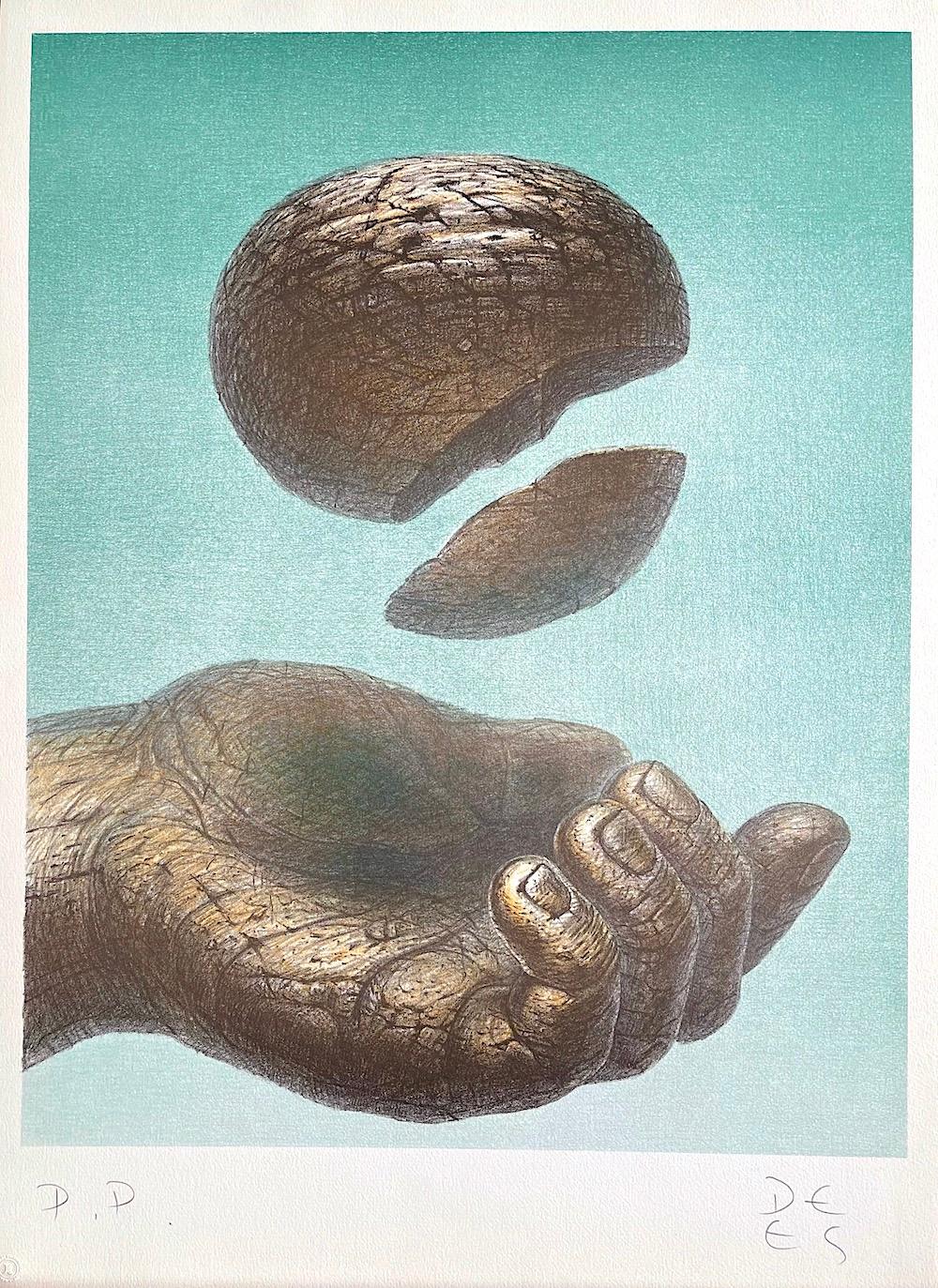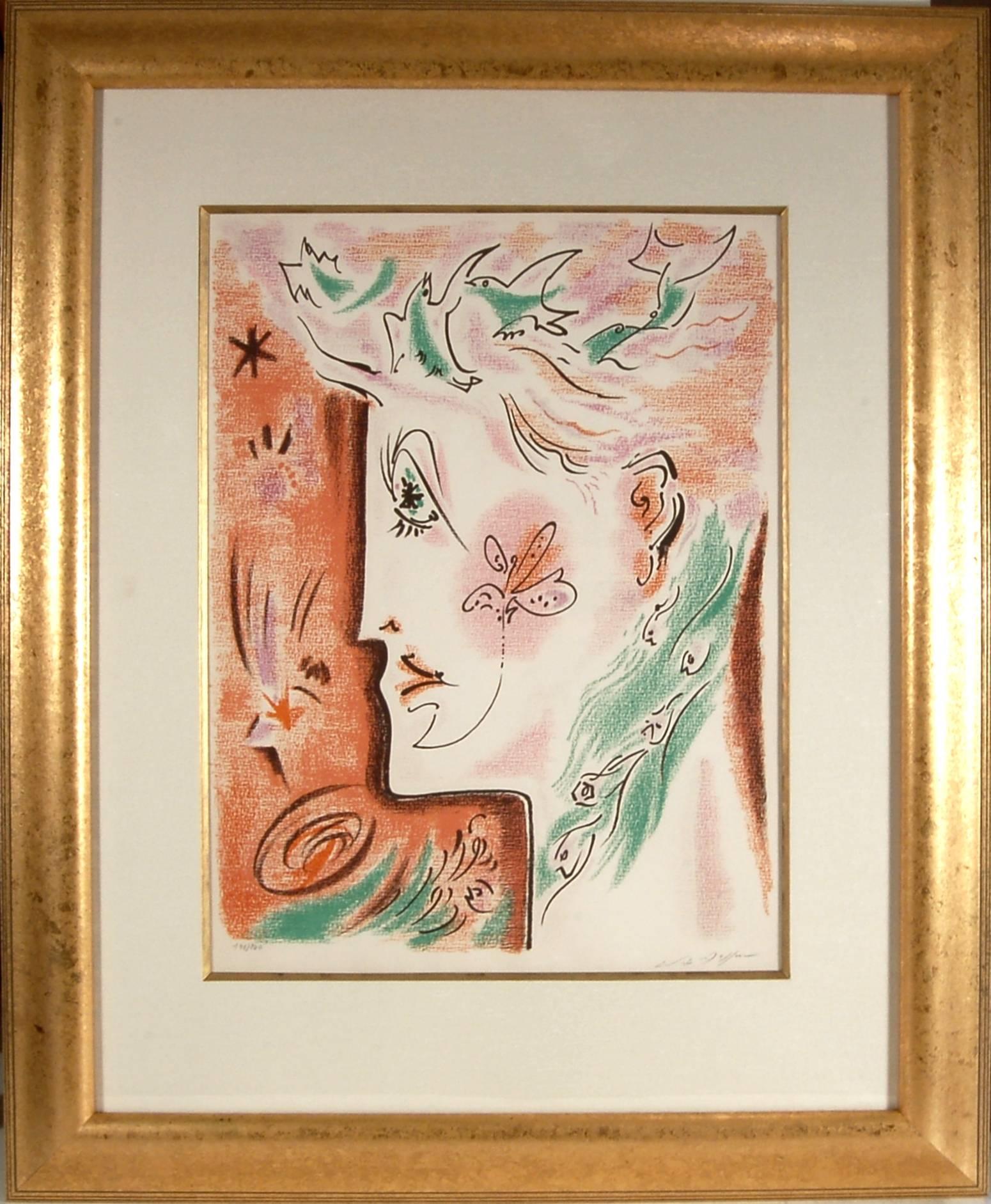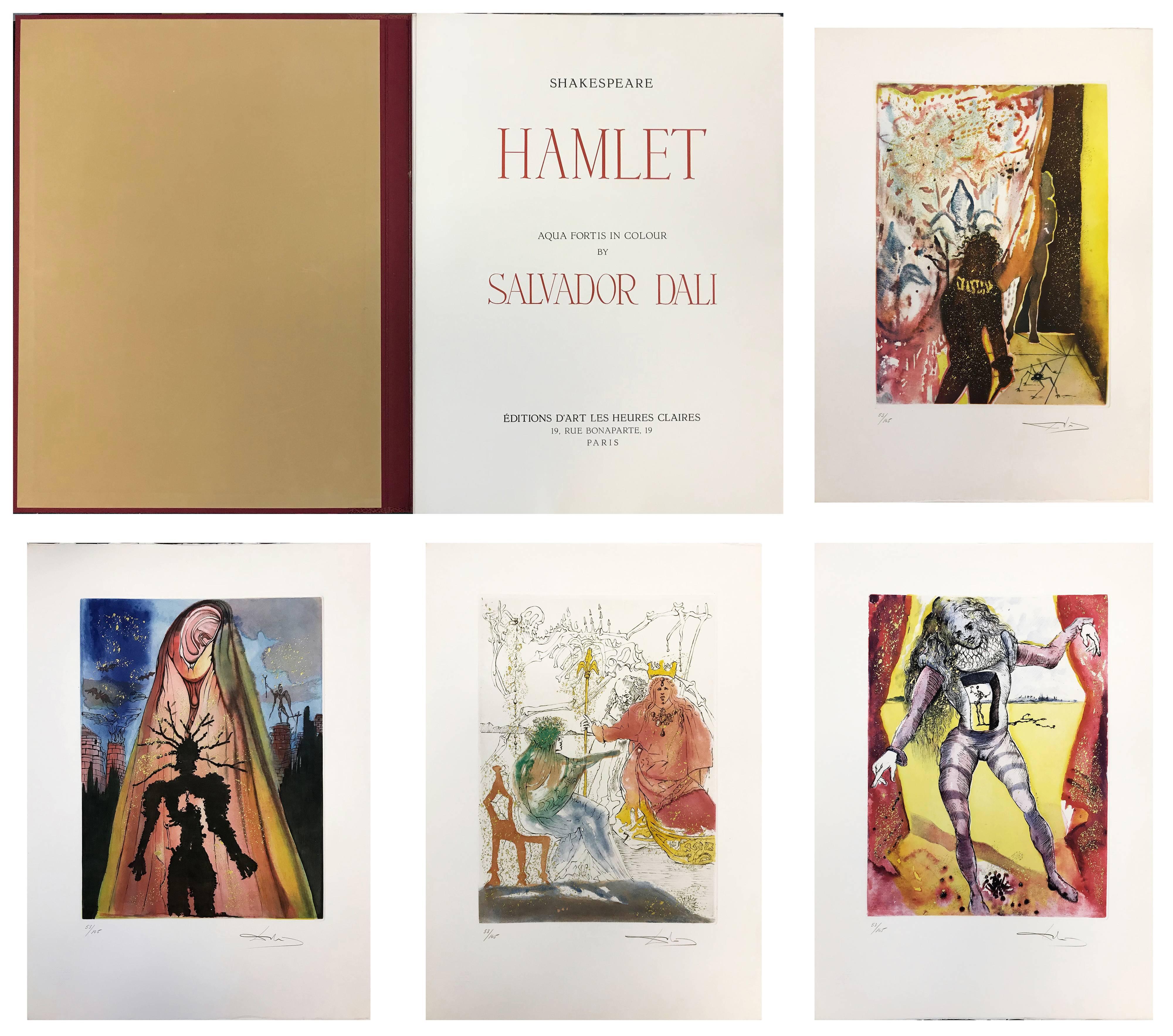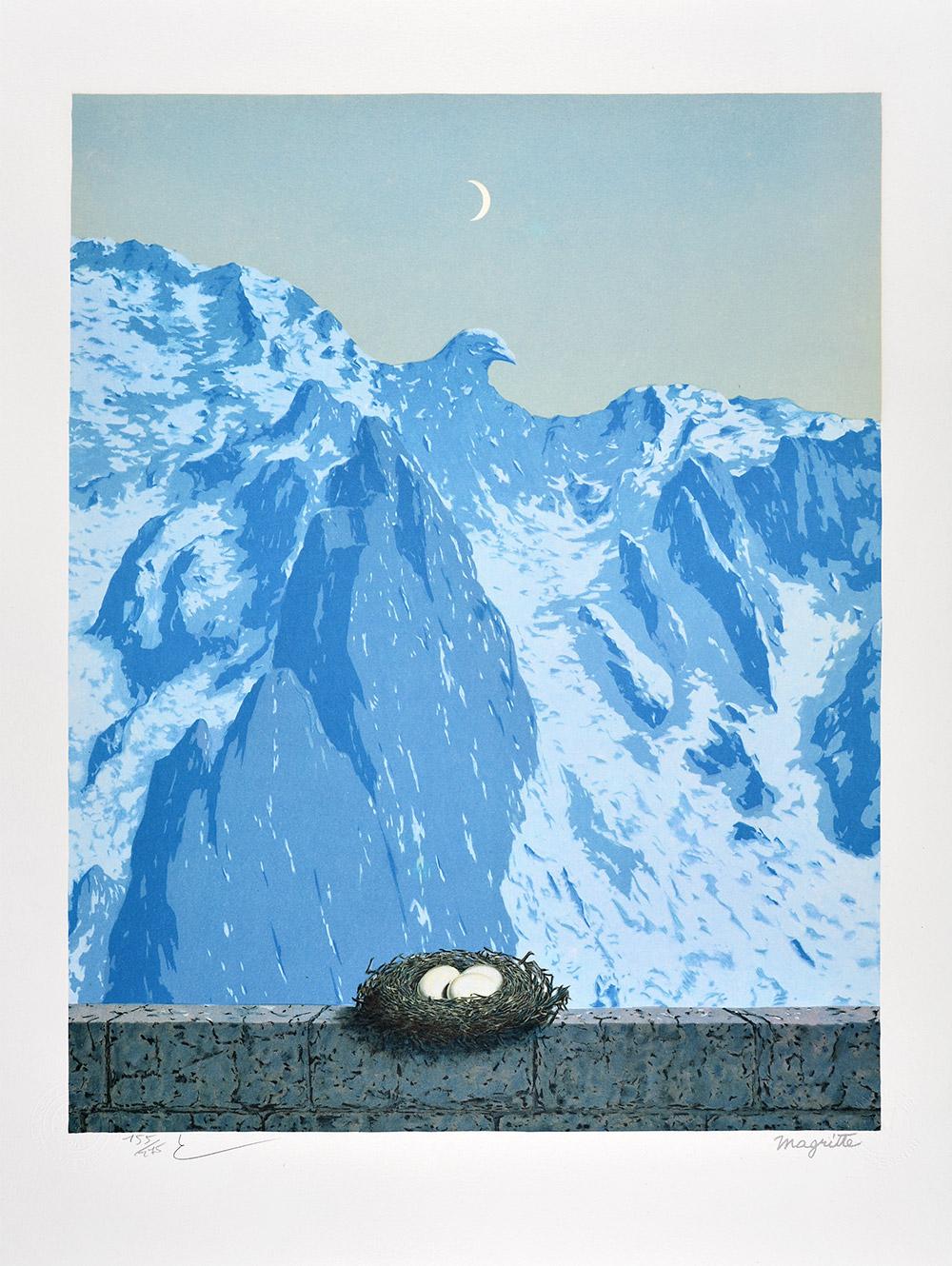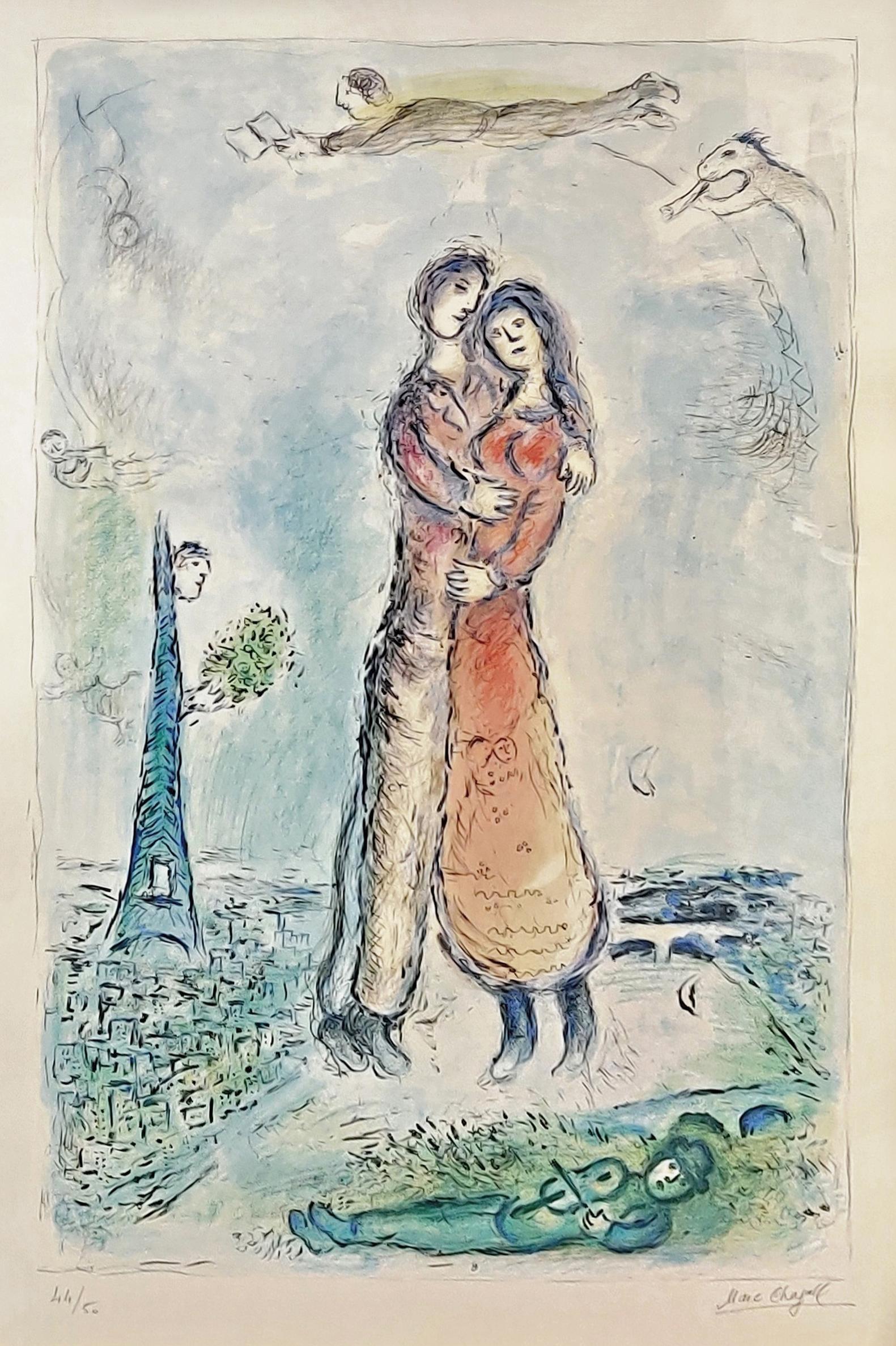André Masson"La Naissance D'Eve, " Surreal Lithograph from "Je Reve" signed by Andre Masson1975
1975
About the Item
- Creator:André Masson (1896-1987, French)
- Creation Year:1975
- Dimensions:Height: 27.5 in (69.85 cm)Width: 33.5 in (85.09 cm)
- Medium:
- Movement & Style:
- Period:
- Framing:Frame IncludedFraming Options Available
- Condition:
- Gallery Location:Milwaukee, WI
- Reference Number:
André Masson
Born in 1896 in Balagny-sur- Thérain, a small village in France, André Masson spent most of his youth in Brussels, Belgium working as a pattern maker at an embroidery atelier. Masson began his schooling in 1907 at the Académie Royale des Beaux-Arts in Brussels. In 1912, he relocated to Paris, where he attended the École des Beaux-Arts. In 1914, the artist was called to military duty for the First World War, where he was severely wounded and sent back to Paris. Much of Masson’s work is influenced by this trauma; his drawings and paintings executed during the 1920s represent battle scenes, blood, death, birds and fish. The strange realities of trench warfare and the immediate contiguity of life and death are drawn upon, and his imagery suggests a confrontation of life at an abnormal level of experience. His signature style deals with violence, evident in terrifying, fragmented figures, which reflect the horrors of the Spanish Civil War and WWII, as well as his troubled psyche in the aftermath of his service in WWI.
After WWI, Masson moved to the South of France, where he met Juan Gris, André Derain, Joan Miró and André Breton. Breton championed the Surrealist Manifesto and Masson joined in the group exhibition of the first Surrealists. An iconoclast, whose abrupt stylistic transitions defy classification, Masson also explored automatism (automatic drawing), a process that sought to express the creative force of the unconscious. These automatic drawings had no preconceived subject or composition. Like a medium channeling a spirit, Masson let his pen travel rapidly across the paper without conscious control. He soon found hints of images, fragmented bodies and objects, emerging from the abstract, lacelike web of pen marks. At times, Masson elaborated on these with conscious changes or additions, but he left the traces of the rapidly drawn ink mostly intact. Masson’s oeuvre explores several techniques of painting, drawing and sculpture and displays rich, colorful abstraction as well as monochrome imagery and automatic linear representations. An early Surrealist and student of Cubism, Masson went on to inspire the New York Abstract Expressionists. Masson developed a technique of automatic painting that retained the element of chance; he dripped glue onto paper to form drawings and then covered it with sand. These ‘sand paintings’ are unquestionably his most iconic style.
When Masson emigrated to the U.S. in 1939, he strongly influenced several American painters with this technique, the most evident example being Jackson Pollack. After his time in America, he returned to Europe and while living in Spain during the mid-1930s, he became enraptured with Spanish themes—bullfights, matadors and Spanish mythology. Masson finally settled down in France (Aix-en-Provence), where he took up a late interest in impressionistic landscape, but he ultimately came to a place where he painted nearly exclusively abstract images. Masson dedicated his life as an artist to encouraging the non-rational purpose in art, to the direct transference of subconscious thought and to the primal forces of conflicts that he experienced in the trenches of World War One. Masson sought to convey in his work a deeper reality of man’s behavior, his own complex personal imagery, and his belief that painting is not a matter of developing style but a part of life itself.
- ShippingRetrieving quote...Ships From: Milwaukee, WI
- Return PolicyA return for this item may be initiated within 14 days of delivery.
- "La Reconnaissance Infinie (The Infinite Recognition)" Litho after Rene MagritteBy René MagritteLocated in Milwaukee, WI"La Reconnaissance Infinie (The Infinite Recognition)" is a color lithograph after the 1963 painting by Rene Magritte. Two of Magritte's bourgeois "little men" stand in the sky. Both look away from the viewer talking to each other in the typical outfit of Magritte's men, black trench coats and bowler hats. Art: 15 x 18.25 in Frame: 26.25 x 29.88 in René-François-Ghislain Magritte was born November 21, 1898, in Lessines, Belgium and died on August 15, 1967 in Brussels. He is one of the most important surrealist artists. Through his art, Magritte creates humor and mystery with juxtapositions and shocking irregularities. Some of his hallmark motifs include the bourgeois “little man,” bowler hats, apples, hidden faces, and contradictory texts. René Magritte’s father was a tailor and his mother was a miller. Tragedy struck Magritte’s life when his mother committed suicide when he was only fourteen. Magritte and his two brothers were thereafter raised by their grandmother. Magritte studied at the Brussels Academy of Fine Arts from 1916 to 1918. After graduating he worked as a wallpaper designer and in advertisement. It was during this period that he married Georgette Berger, whom he had known since they were teenagers. In 1926, René Magritte signed a contract with the Brussels Art Gallery, which allowed him to quit his other jobs and focus completely on creating art. A year later he had his first solo show at the Galerie la Centaurie in Brussels. At this show Magritte exhibited what is today thought of as his first surrealist piece, The Lost Jockey, painted in 1926. In this work a jockey and his steed run across a theater stage, curtains parted on either side. Throughout the scene, there are trees with trunks shaped somewhat like chess pawns with musical scores running vertically up their sides and branches sticking out from all angles. Critics did not enjoy this style of art; it was new, different, and took critical thought to understand, but The Lost Jockey was only the first of many surrealist artworks Magritte would paint. Because of the bad press in Brussels, René and Georgette moved to Paris in 1927, with the hope that this center of avant-garde art would bring him success and recognition. In Paris, he was able to become friends with many other surrealists, including André Breton and Paul Éluard. They were able to learn from and inspire one another, pushing the Surrealist movement further forward. It was also in Paris that Magritte decided to add text to some of his pieces, which was one of the elements that made his artwork stand out. In 1929, he painted one of his most famous oil works: The Treachery of Images. This is the eye-catching piece centered on a pipe. Below the pipe is written “Ceci n’est pas un pipe,” which translates to “This is not a pipe.” This simple sentence upset many critics of the time, for of course it was a pipe. Magritte replied that it was not a pipe, but a representation of a pipe. One could not use this oil on canvas as a pipe, to fill it with tobacco and smoke it. Thus, it was not a pipe. In 1930, Magritte and Georgette moved back to Brussels. Though they would travel to his exhibitions elsewhere, their home going forward would always be in Brussels. Magritte had his first American exhibition at the Julien Levy Gallery in New York City in 1936 and his first show in England two years later in 1938 at The London Gallery...Category
2010s Surrealist Figurative Prints
MaterialsLithograph
- "Le Bouquet tout fait (The Ready-made Bouquet), " Lithograph after Rene MagritteBy René MagritteLocated in Milwaukee, WI"Le Bouquet tout fait (The Ready-made Bouquet)" is a color lithograph after a 1954 original painting by Rene Magritte. A bourgeois "little man" faces away from the viewer looking towards a fall forest. Flora, the goddess of flowers and season of spring, from Sandro Botticelli's "Primavera" is painted on the back of the man. This juxtaposes fall and spring. Art: 12 x 9.75 in Frame: 22.38 x 20.38 in René-François-Ghislain Magritte was born November 21, 1898, in Lessines, Belgium and died on August 15, 1967 in Brussels. He is one of the most important surrealist artists. Through his art, Magritte creates humor and mystery with juxtapositions and shocking irregularities. Some of his hallmark motifs include the bourgeois “little man,” bowler hats, apples, hidden faces, and contradictory texts. René Magritte’s father was a tailor and his mother was a miller. Tragedy struck Magritte’s life when his mother committed suicide when he was only fourteen. Magritte and his two brothers were thereafter raised by their grandmother. Magritte studied at the Brussels Academy of Fine Arts from 1916 to 1918. After graduating he worked as a wallpaper designer and in advertisement. It was during this period that he married Georgette Berger, whom he had known since they were teenagers. In 1926, René Magritte signed a contract with the Brussels Art Gallery, which allowed him to quit his other jobs and focus completely on creating art. A year later he had his first solo show at the Galerie la Centaurie in Brussels. At this show Magritte exhibited what is today thought of as his first surrealist piece, The Lost Jockey, painted in 1926. In this work a jockey and his steed run across a theater stage, curtains parted on either side. Throughout the scene, there are trees with trunks shaped somewhat like chess pawns with musical scores running vertically up their sides and branches sticking out from all angles. Critics did not enjoy this style of art; it was new, different, and took critical thought to understand, but The Lost Jockey was only the first of many surrealist artworks Magritte would paint. Because of the bad press in Brussels, René and Georgette moved to Paris in 1927, with the hope that this center of avant-garde art would bring him success and recognition. In Paris, he was able to become friends with many other surrealists, including André Breton and Paul Éluard. They were able to learn from and inspire one another, pushing the Surrealist movement further forward. It was also in Paris that Magritte decided to add text to some of his pieces, which was one of the elements that made his artwork stand out. In 1929, he painted one of his most famous oil works: The Treachery of Images. This is the eye-catching piece centered on a pipe. Below the pipe is written “Ceci n’est pas un pipe,” which translates to “This is not a pipe.” This simple sentence upset many critics of the time, for of course it was a pipe. Magritte replied that it was not a pipe, but a representation of a pipe. One could not use this oil on canvas as a pipe, to fill it with tobacco and smoke it. Thus, it was not a pipe. In 1930, Magritte and Georgette moved back to Brussels. Though they would travel to his exhibitions elsewhere, their home going forward would always be in Brussels. Magritte had his first American exhibition at the Julien Levy Gallery in New York City in 1936 and his first show in England two years later in 1938 at The London...Category
2010s Surrealist Figurative Prints
MaterialsLithograph
- "La Grande Guerre (The Great War), " Color Lithograph after Rene MagritteBy René MagritteLocated in Milwaukee, WI"La Grande Guerre (The Great War)" is a color lithograph after the 1964 painting by Rene Magritte. A Victorian lady stands in white facing the viewer. A bouq...Category
2010s Surrealist Figurative Prints
MaterialsLithograph
- "Satan" from "Je Reve" portfolio, Surrealist Lithograph, SignedBy André MassonLocated in Milwaukee, WI"Satan" is an original color lithograph by Andre Masson. This piece is from the "Je Reve" (I Dream) portfolio of 1975. The edition number, written lower left, is H.C. XXV/XXV. The ar...Category
1970s Surrealist Figurative Prints
MaterialsPaper, Lithograph
- "Bacchanale from Je Reve (I Dream) Portfolio, " Original Color LithographBy André MassonLocated in Milwaukee, WI"Bacchanale" is an original color lithograph by Andre Masson. This piece is from the Je Reve (I Dream) portfolio and is edition number H.C. XVV/XVV. Masson signed the piece in pencil...Category
1970s Surrealist Figurative Prints
MaterialsLithograph
- "Le Prince Iris, " Surrealist Lithograph From "Je Reve" PortfolioBy André MassonLocated in Milwaukee, WI"Le Prince Iris" is an original color lithograph by Andre Masson. The artist signed the piece lower right in pencil and wrote the edition number, H.C. XXV/X...Category
1970s Surrealist Figurative Prints
MaterialsLithograph
- The Absolute Real - Lithograph by Man Ray - 1964By Man RayLocated in Roma, ITThe Absolute Real is a lithograph realized by Man Ray in 1964. Hand-singed in pencil by the Artist. Lithograph in Red Ink, 1964. Published by Schwarz, the lithograph is part of th...Category
1960s Surrealist Figurative Prints
MaterialsLithograph, Paper
- Surrealist WomanBy André MassonLocated in San Francisco, CAArtist: Andre Masson (French) Title: Surrealist Woman Year: 1970 Medium: Color lithograph Edition: Numbered 146/200 in pencil Image size: 24 x 18.5 inches Signature: Hand signed in...Category
Mid-20th Century Surrealist Figurative Prints
MaterialsLithograph
- RECEIVING HAND Signed Lithograph, Fantastic Realism, Stone, Healing ArtBy De Es SchwertbergerLocated in Union City, NJRECEIVING HAND is a hand drawn original lithograph printed using hand lithography techniques on archival Arches printmaking paper 100% acid free. RECEIVING HAND a finely detailed han...Category
1970s Surrealist Figurative Prints
MaterialsLithograph
- HAMLET SUITEBy Salvador DalíLocated in Aventura, FLThis rare 10 piece series from 1973 is Dali's interpretation of Shakespeare's drama Hamlet. Dali paid homage to Shakespeare in several other works but this suite is considered to be ...Category
1970s Surrealist Figurative Prints
MaterialsLithograph, Engraving, Aquatint, Paper
- René Magritte - LE DOMAINE D'ARNHEIM Limited Surrealism French ContemporaryBy (after) René MagritteLocated in Madrid, MadridRené Magritte - LE DOMAINE D'ARNHEIM, 1962 (THE DOMAIN OF ARNHEIM) Date of creation: 2010 Medium: Lithograph on BFK Rives Paper Edition number: 155/275 Size: 60 x 45 cm Condition: Ne...Category
Mid-20th Century Surrealist Figurative Prints
MaterialsPaper, Lithograph
- LA JOIBy Marc ChagallLocated in Aventura, FLLithograph in colors on Arches paper hand signed and numbered by the artist. Mourlot 976. Sheet size 28.70 x 21.10 inches. Image size 37.25 x 24.25 inches. Frame size 53.25 x 39.25 ...Category
1980s Surrealist Figurative Prints
MaterialsLithograph, Paper
